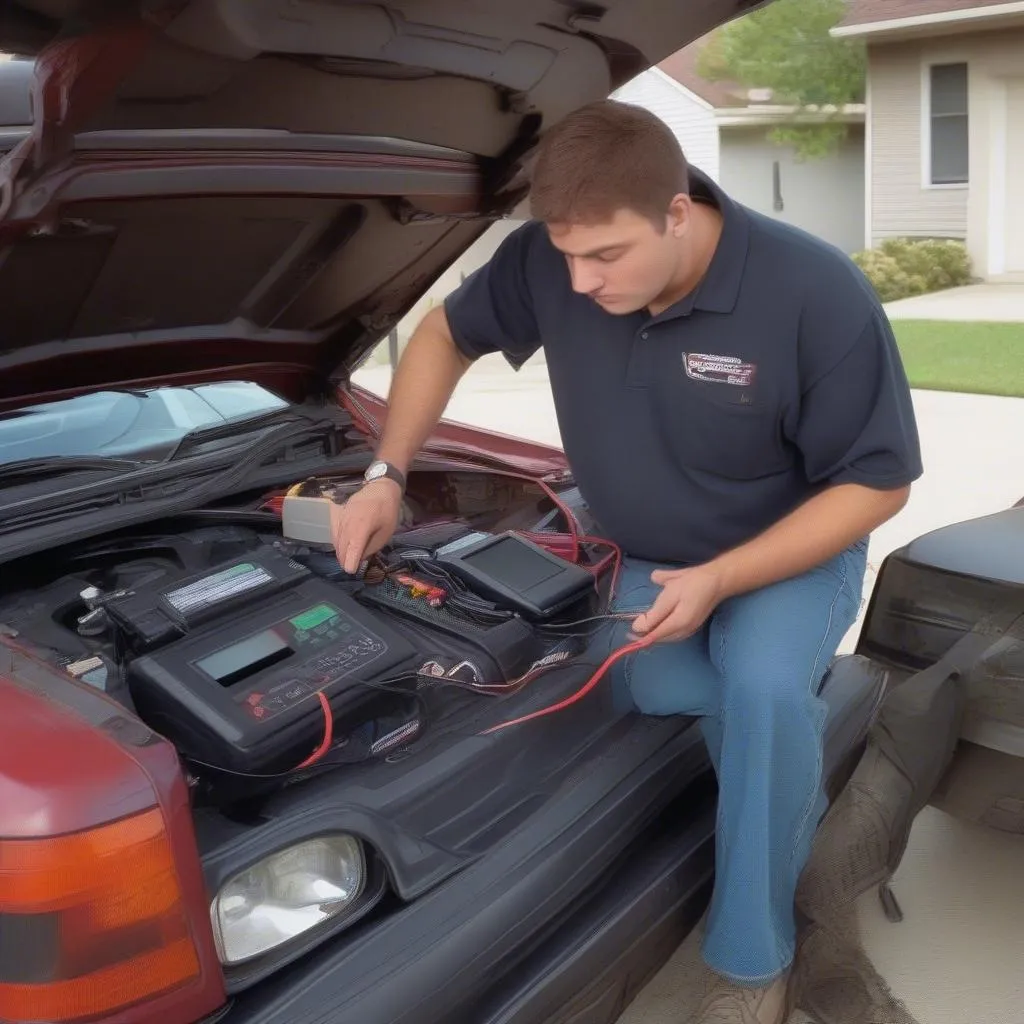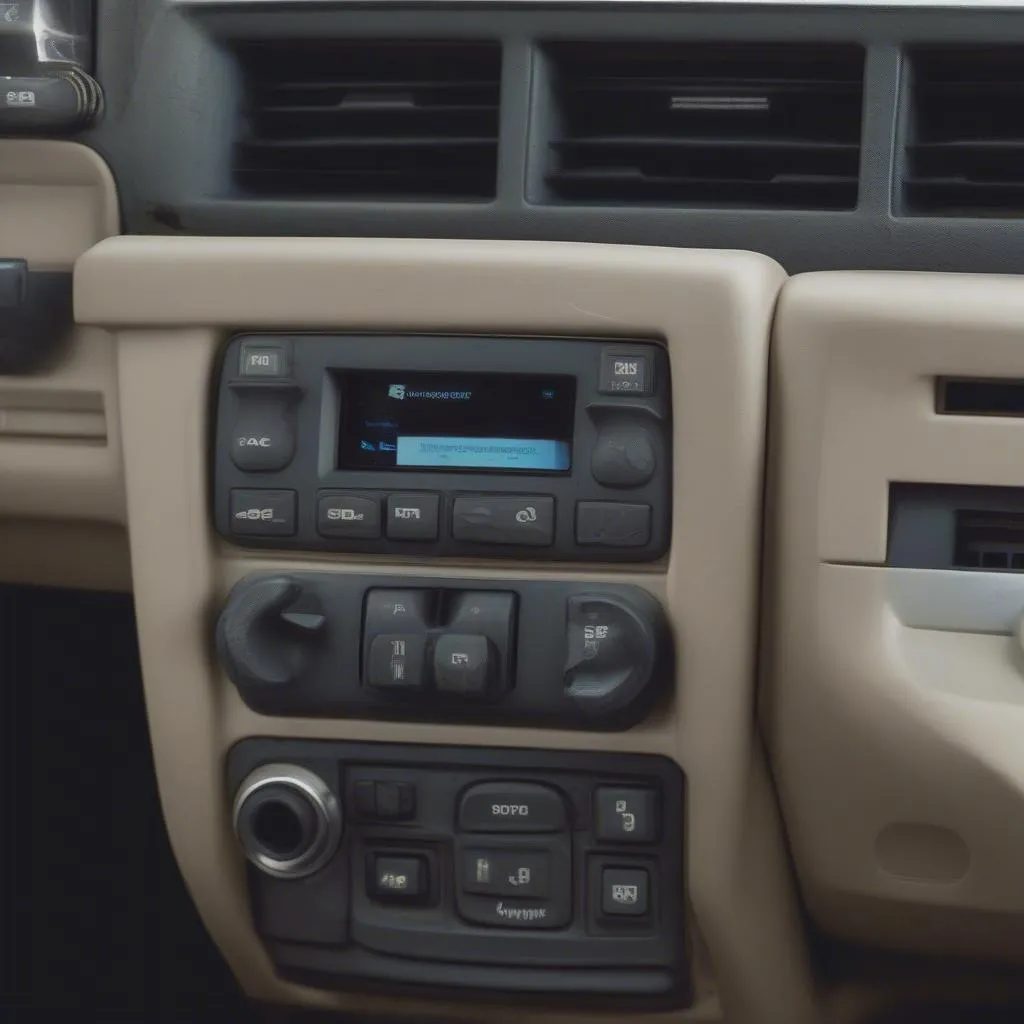Ever been stuck on the side of the road with a blinking check engine light and a 1998 Dodge Ram? It’s not a fun experience, but thankfully, you can troubleshoot many issues yourself using the OBD (On-Board Diagnostics) system.
What is OBD?
The OBD system is like a built-in computer in your car that monitors various systems and functions, including engine performance, emissions, and even the airbag system. It stores diagnostic codes that can help identify potential problems.
Why is OBD Important for a 1998 Dodge Ram?
The 1998 Dodge Ram was one of the first vehicles to have OBD-II, a standardized system that makes troubleshooting much easier. Prior to OBD-II, each manufacturer had its own diagnostic system, making it difficult for mechanics to diagnose problems across different vehicles.
How to Access and Use OBD on a 1998 Dodge Ram
To access the OBD port on your 1998 Dodge Ram, look for a 16-pin connector typically located under the dashboard, near the steering column.
Tools you’ll need:
- OBD-II Scanner: You can find these at most auto parts stores or online. These scanners can read and clear diagnostic codes, and some can even provide live data readings.
- Manual: You’ll need the repair manual for your 1998 Dodge Ram to interpret the diagnostic codes and understand how to fix any issues.
Steps:
- Plug in your OBD-II scanner: Connect the scanner to the OBD port in your 1998 Dodge Ram.
- Turn the ignition key to the “ON” position: You don’t need to start the engine.
- Read the codes: Your scanner will display the diagnostic codes. Use your repair manual or an online database to look up the meaning of each code.
- Clear the codes: Once you’ve addressed the issue, you can clear the codes using your OBD-II scanner.
Common OBD Codes and Issues for a 1998 Dodge Ram
Here are some common OBD codes and issues you might encounter with your 1998 Dodge Ram:
- P0171 – System Too Lean: This code indicates a problem with the fuel-air mixture, which can be caused by a faulty oxygen sensor, a clogged fuel filter, or a vacuum leak.
- P0300 – Random/Multiple Cylinder Misfire Detected: This code is a catch-all for misfires that are happening in multiple cylinders. It can be caused by a faulty spark plug, a bad ignition coil, or a failing fuel injector.
- P0420 – Catalyst System Efficiency Below Threshold (Bank 1): This code points to a problem with the catalytic converter, which might need to be replaced.
- P0135 – Oxygen Sensor Heater Circuit Malfunction (Bank 1 Sensor 1): This code indicates a problem with the oxygen sensor, which might need to be replaced.
Tips for Using OBD for a 1998 Dodge Ram
- Check your engine light: If your check engine light is on, use your OBD-II scanner to read the codes.
- Use a reputable OBD-II scanner: Not all scanners are created equal. Choose one that has good reviews and is compatible with your 1998 Dodge Ram.
- Don’t ignore the codes: OBD codes can provide valuable insights into potential problems. Don’t just clear the codes without addressing the underlying issue.
- Research the codes: Take the time to understand what each code means and how to troubleshoot the issue.
Where to Find More Information
You can find additional information on OBD and how to use it with a 1998 Dodge Ram on several online resources, including:
- Dodge Ram Forums: These forums are a great place to connect with other Dodge Ram owners and get advice on troubleshooting OBD codes.
- Vehicle Repair Manuals: The repair manual for your 1998 Dodge Ram will provide detailed information on each component of the vehicle, including the OBD system.
- Online Databases: Many websites provide information on OBD codes and how to interpret them.
FAQs About OBD and 1998 Dodge Rams
Q: Can I use a generic OBD-II scanner on my 1998 Dodge Ram?
A: Yes, you can use a generic OBD-II scanner on your 1998 Dodge Ram. However, some scanners may not be able to read all of the codes or provide as much information as a more specialized scanner.
Q: Can I clear OBD codes myself?
A: Yes, you can clear OBD codes yourself using an OBD-II scanner. However, it’s important to understand the underlying issue and fix it before clearing the codes.
Q: What if my OBD port is not working?
A: If your OBD port is not working, you may need to have it checked by a qualified mechanic. There may be a problem with the wiring or the port itself.
Q: How do I find the right OBD-II scanner for my 1998 Dodge Ram?
A: Look for a scanner that is compatible with OBD-II. Many scanners are compatible with most vehicles, but some may have specific features that are better suited for certain models.
Q: Can I use my smartphone to read OBD codes?
A: Yes, there are several smartphone apps that can connect to your vehicle’s OBD port and read codes. However, make sure to use a reputable app and ensure it is compatible with your 1998 Dodge Ram.
 obd scanner
obd scanner
 obd port
obd port
Conclusion
The OBD system is a valuable tool that can help you troubleshoot and diagnose problems with your 1998 Dodge Ram. By understanding how to use the system, you can save yourself time and money on repairs.
Have any questions about OBD on your 1998 Dodge Ram? Leave a comment below!
Still need help troubleshooting your 1998 Dodge Ram? Contact our team of experts at Whatsapp: +84767531508 for 24/7 support!